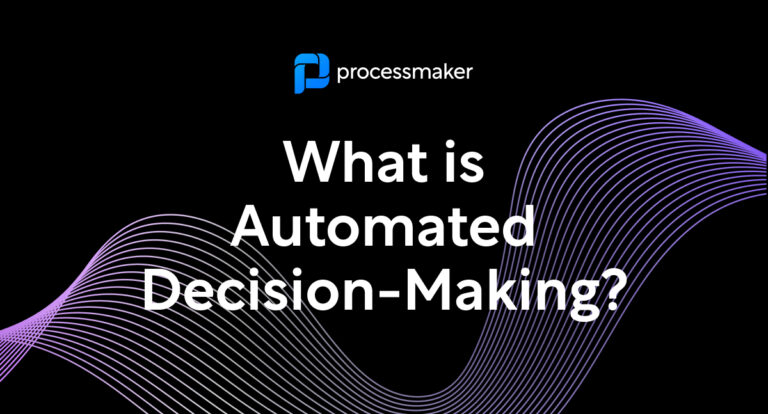Higher education has changed drastically within the last few decades. Even in the past 10 years, we as a society, have seen technology not only influence college curricula but enter the classrooms as new learning tools. What will the future hold for higher education? A disrupted higher education system will be characterized by four main elements: digital transformation, globalization, privatization, and the future student profile.
A Changing Landscape: Technology, Innovation, and the Digital World
Technology has had a significant impact on student life, faculty, curricula, and accessibility of education. Laptops, iPads, and other forms of tech have altered the way teachers teach students. Some tech like smart boards has completely replaced whiteboards in classrooms. Blended learning environments involving hybrid instruction of digital and on-site classes, flipped classrooms, and MOOCs (Massive Online Open Courses) have fundamentally changed the way students learn, pay for college, and professors teach in their classes.
Technology allows for instant access to news, research, and promotes the widespread flow of information across campuses. Technology also has contributed to an increase in engagement on campus now that clubs, office processes, courses, and meetings are organized and held online. To reach the peak operational functionality of multiple departments, more universities are turning to automated solutions to better deliver a better student experience. An exceptional student journey helps overcome the common higher education challenge of declining enrollment rates.
But what about how digital transformation of the college itself and its curricula affects the future? What does a digitally disrupted university look like for tomorrow? Vernon Smith, EDUCAUSE member and the Chief Academic Officer of the American Public University System, suggests that Ed Tech is redefining the way higher education institutions exist and grow in their sector and the world.
“Technology is starting to break what I and others call the iron triangle, which is the cost, the quality, and the access our students have to education,” says Smith, “in the last 10 years, I think the ‘T’ in ‘IT’ was a little bit bigger than the ‘I.’ In the next 10 years, the ‘I’ will have more importance than the ‘T.’ “
Smith is referring to the explosive growth of MOOCs offered through the web, a viable solution for students today overloaded in debt. These online courses do not require the overhead or software infrastructure of a physical campus, enabling colleges to offer higher education at a much lower cost than their on-site counterparts. They also offer the same course offerings as those at a university at a fraction of the cost. For example, Georgia Tech’s Online Master of Computer Science Degree is just $6,600 — a considerable reduction in price for those seeking to be totally on-campus.
Another way higher education will change as a result of digital transformation is the increased specialization of teachers in niche fields. As more industries require top-of-the-line talent from these colleges, professors supplying the education need to go deep rather than wide. This is an effect of new technical fields influencing the job market and business becoming more influential in academia, as students try to prepare as best they can for their post-graduation careers. Increased specialization will also be a key differentiator between universities looking to attract top talent in the future.
Student Mobility: The Globalization of Higher Education
The traditional student went to college nearby, or at the very least, in their own country. As world travel becomes more accessible and the United States faces increasing competition from foreign universities, American campuses are changing their educational models to better fit the new demands.
Partnerships with universities in competing countries overseas is one way these universities are working around this challenge. More students today are traveling outside of American soil to seek higher education opportunities for global experiences and lower tuition rates overall. The Wall Street Journal reports in some cases, tuition is nonexistent in other countries.
As the mobility of the student body and fluidity of learning environments increases in the future, higher education models of today will continue to adapt to meet new student and market demands. Colleges will initiate more partnerships with foreign institutions for research, law, technology, and other sectors in order to offer a competitive higher education experience to prospective students. Virtual participation will also increase, allowing students from any background to learn any way they want, anywhere in the world.
The Increasing Trend of Privatization
State funding of universities has been on a rapid decline for the last decade. The Class of 2018 graduated with an average student debt amount just shy of $30,000, meaning debt and tuition rates are at an all-time high. As the government continues to lessen the amount of funding available to these colleges, university boards have begun to seek funding elsewhere.
Matthew T. Lambert — author of Privatization and the Public Good: Public Universities in the Balance and Vice President of University Advancement at the College of William and Mary — believes that the growing divide between government and higher education institutions will lead to increased financial independence and governance for universities moving forward.
“The knowledge economy, which is driven by globalization, requires institutions to focus on economic development in whole new ways,” says Lambert.
Many colleges frown on the idea of education shifting from the public-driven purpose of education to the private sector. The lack of oversight from federal and state government puts control in the hands of the colleges themselves. Considering fake degrees are part of a multi-million dollar industry, privatization could further perpetuate this growing concern.
The growing demand for reduced tuition and accessible education has led to an explosion in the market of fully digital businesses claiming to be “colleges” offering accredited degrees. Not only is a fake degree resulting in debt and legal setbacks, but some employers won’t acknowledge degrees that aren’t accredited, meaning time invested in what is thought to be time well-spent is now a costly mistake.
But Lambert argues this shift doesn’t have to be detrimental to the original mission and values of publicly-funded colleges. According to an interview with Inside Higher Ed, Lambert brings hope to the state of affairs by reminding readers of the benefits of finding funding outside of the state. If anything, privatization could help further the mission of public institutions in the wake of attracting more students.
The Student of the Future
Today’s student profile is a lot different than the average student from twenty years ago. Currently, over 60% of students enrolled in higher education are now over 25 years of age. More than 60% of students overall are now working full-time while pursuing their education.
With more and more students having to work while attending school, the future of higher education must reflect the needs of the new student body. Americans are trillions in debt and there is more inclusivity in the student body. Women are graduating more than ever, including demographics reflecting single mothers, women of color, and international graduates. While the statistics are promising, the data leaves room for questions; for example, more single mothers in college is because of the changing family structure of the typical American household. Single mothers still aren’t graduating like their childless peers, and the graduate number decreases, even more, when racial disparity comes into play.
As family structures, privatization, and accessibility of education change, the students of tomorrow will have to seek alternatives to afford their education. Refinancing, private loans, and funding from alternative sources suggest today’s student is different than in previous decades, and keen on seeking non-traditional routes and environments to obtain an education. Tomorrow’s student will seek a more immersive online learning experience as virtual learning increases, moving from passive quizzes and lectures to greater feedback and interactive models. According to EDUCAUSE, neuroscience research indicates these learning models reap the greatest rewards in learning retention.
The New Higher Ed
Higher education is changing more every day thanks to technology, financial burdens of the global economy, and societal progression. As more universities shift from a publicly funded model to private funding, with more MOOCs, students of the future can expect a more affordable, but more impactful education moving forward.
The job market of today requires many people to return back to school to upskill or change paths completely just to keep their positions or gain a salary raise. Is your college doing everything it can to bend to the wave of current disruption for a better tomorrow?
ProcessMaker specializes in optimizing core operations for universities seeking to drive down cost, overcome competition, and increase student retention. Are you interested in preparing your college for the future? Find out how ProcessMaker has been disrupting the higher education space with our automated workflow platform at www.processmaker.com.
About ProcessMaker:
ProcessMaker is a low-code business process management and workflow software. ProcessMaker makes it easy for business analysts to collaborate with IT to automate complex business processes connecting people and existing company systems. Headquartered in Durham, North Carolina in the United States, ProcessMaker has a partner network spread across 35 countries on five continents. Hundreds of commercial customers, including many Fortune 100 companies, rely on ProcessMaker to digitally transform their core business processes enabling faster decision making, improved compliance, and better performance.





